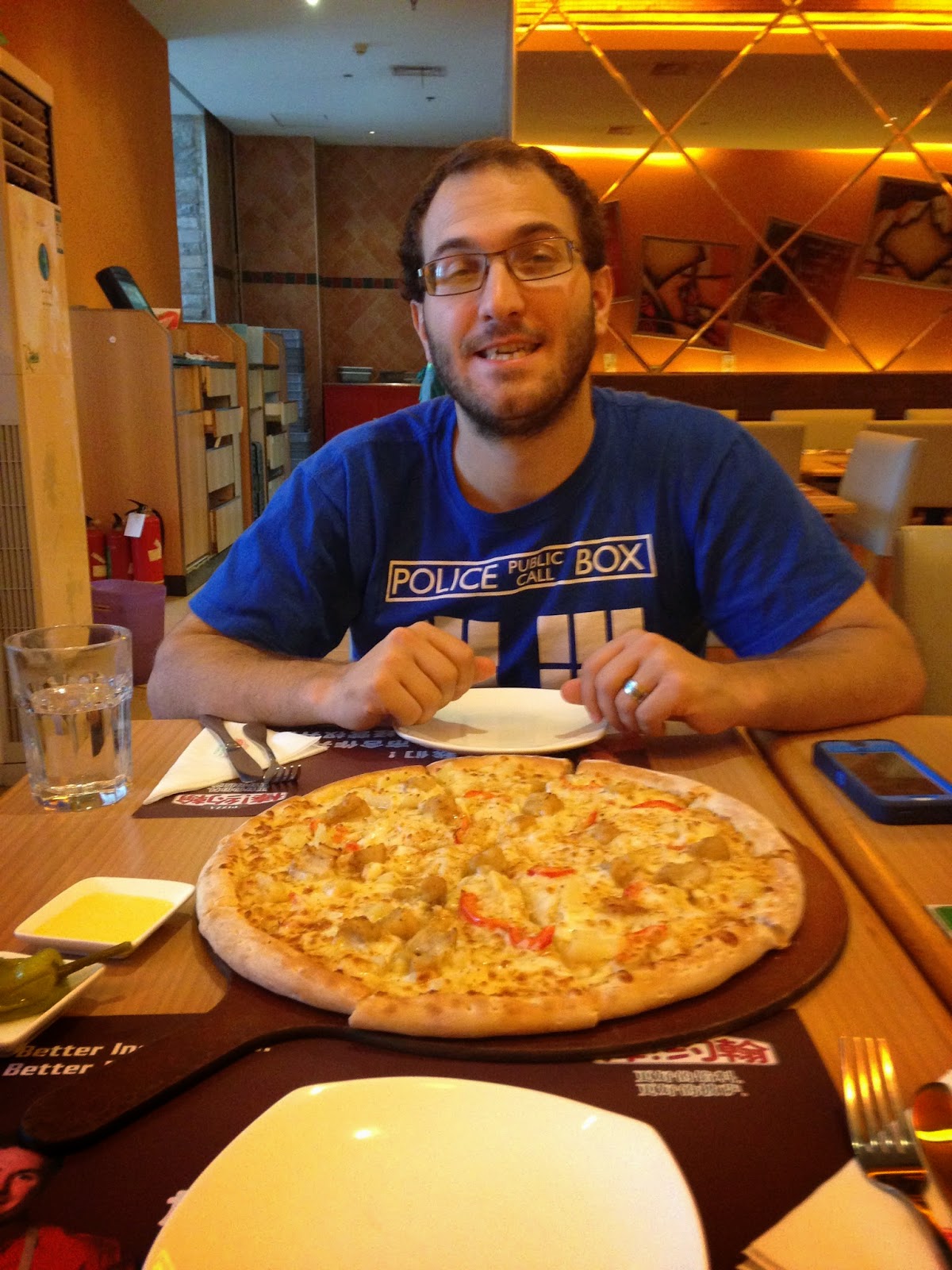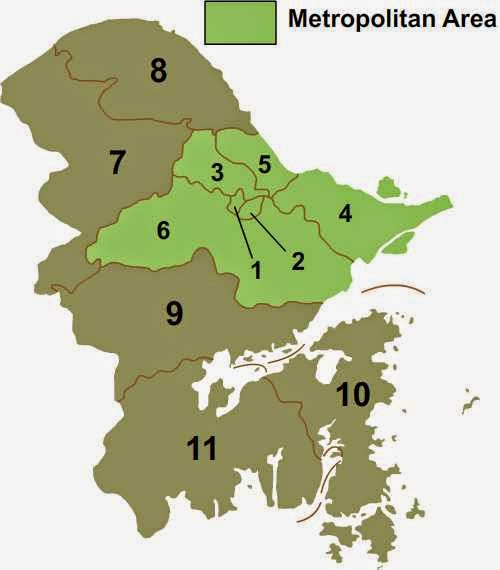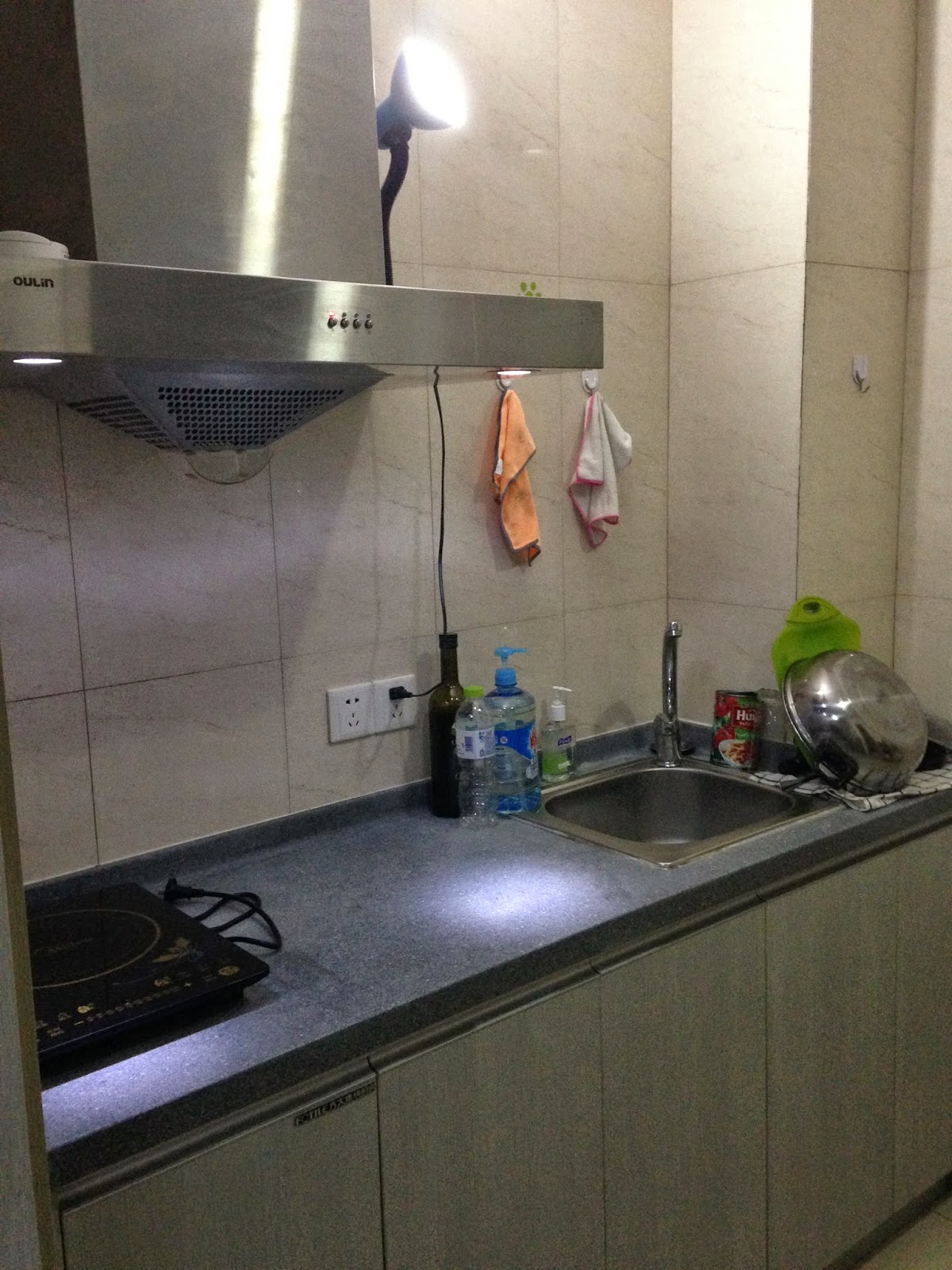On October 1, 1949, The People's Republic of China was founded and October 1 was established as National Day within China. The holiday is celebrated with fireworks and other festivities and the streets here in Ningbo have been decorated with Chinese flags, not unlike how we celebrate the Fourth of July at home.
Flags decorating the bus stop on Tiantong Rd
Unlike the celebrations that surround the Fourth, however, National Day begins a Golden Week. A Golden Week, which is celebrated twice a year, is 7 continuous days off of work. The way these 7 days off work are achieved is a bit odd as your weekends are rearranged to help create it, but nonetheless it is nice to have 7 continuous days off. Many people travel during the Golden week, but Jon and I elected to stay here in Ningbo since we are still experiencing all that this city has to offer. In addition, since everyone travels during the week, I have heard that a lot of places become very, very, very busy at this time of the year.
That being said, Jon and I have had fun the past two days continuing to explore Ningbo. Today our plans were changed a bit because the bus we needed to go to Dongqian Lake was extremely full as was the second one that we waited for. As we didn't want to be stuck on a bus like that for close to an hour or more, we instead went and explored the area around my school.
Century Oriental Plaza -- the shopping center where I work
There wasn't too much of interest near my work, but Jon and I found a Korean Barbecue restaurant that my co-worker told me was authentic and good and Jon was able to see the area where I worked. Not too interesting of a day, but as we did a lot of walking yesterday, it was rather relaxing.
Yesterday was by far more exciting as Jon and I discovered more of Ningbo, including Tian Yi Ge, an old private library [the oldest library in China] and residence that was built in 1561.
The east entrance of Tian Yi Ge
Tian Yi Ge was built by Fan Qin, an Imperial minister during the Ming Dynasty era. It was his personal residence, but it grew to become a library as Fan Qin was a bibliophile. At one point in the library's history, it contained a collection of 70,000 volumes. As you can imagine, I am quite envious of Fan Qin as I can only imagine being able to acquire so many books.
Fan Qin was meticulous in caring for his books and devised a system that his descendants continued. Not only were the books regularly ventilated, but Qin also placed bags of herbs and special stones in the bookcases that absorbed the moisture and kept bookworms away. These measures preserved them through the centuries while many other famous libraries from the Ming period faded away. In fact, these measures were so effective at preserving the books that Tian Yi Ge served as a prototype to many imperial libraries during the Qing Dynasty.
There is a mini-museum within Tian Yi Ge that explains its history. The library has survived a lot since the 16th century including the First Opium War, the Taiping Rebellion and multiple thefts. The museum also displayed some of the books, some of which date to Fan Qin himself. To me this is remarkable because they do not appear to date from the 16th century as seen in the pictures below.
A poetry book of Fan Qin's
Fan Qin's Long Poetry in his handwriting
As I mentioned, Tian Yi Ge is not only a preserved library, but was also the Qin residence and is full of beautiful buildings and gardens.
They were all pretty impressive, but nothing beat the Qin Ancestral Hall and the Bridal Sedan Hall. There was not much information on either of these two locations, at least in English, but they were pretty impressive to look at even without knowing the basics about them.
Qin Ancestral Hall
Bridal Sedan Hall
In all, yesterday was an amazing day. The weather was gorgeous and we were able to see and do so much, including Tian Yi Ge. Hopefully we will have a few more days like yesterday in the next couple of days!




















































